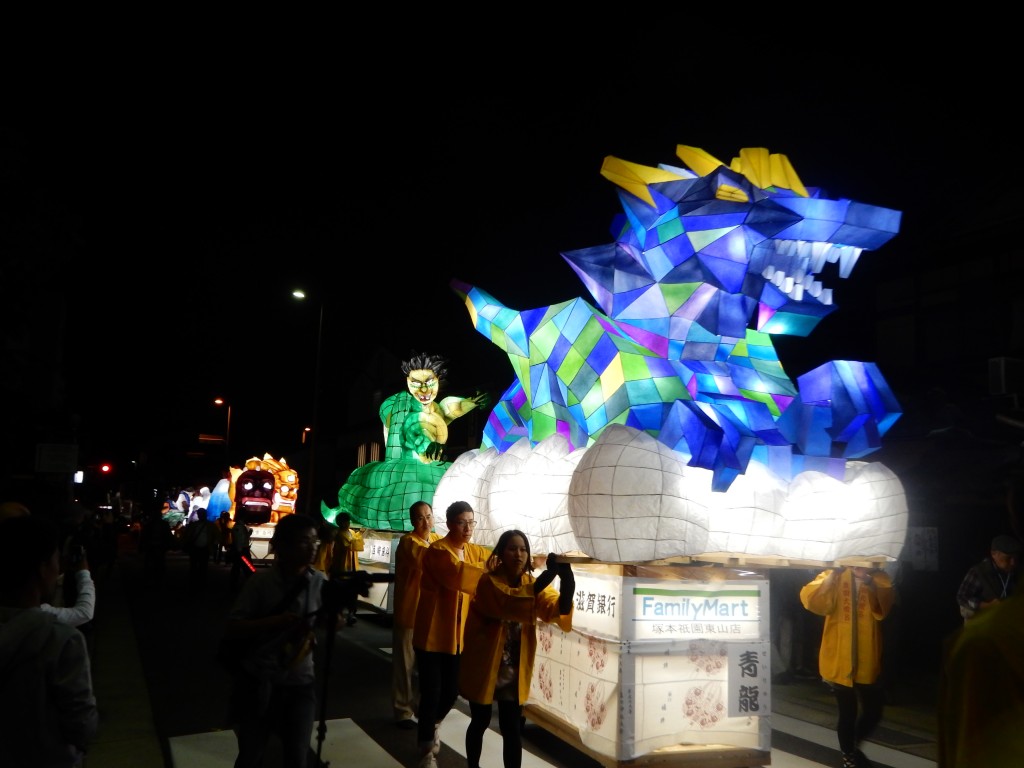
The eye-catching lantern festival of Awata Jinja with Seiryu (blue dragon) at the front
Autumn is a busy time for festivals, and this weekend in Kyoto there were fascinating events at two of Kyoto’s less well-known shrines, Yasui Konpira-gu and Awata Jinja. Green Shinto has reported on the festivals before (see here and here). Last year we very much enjoyed the daytime event at Awata Jinja, when mikoshi (portable shrines) are paraded around the parish. This year, because of a typhoon, it had to be cancelled; however, the lantern parade the evening before was able to take place – and what a fascinating event it was!
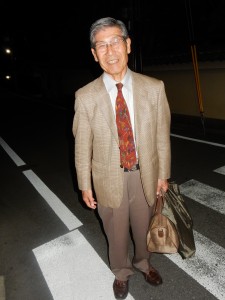
Awata san is descended from the original clan that established the shrine
Awata Jinja in the east of Kyoto was once the home shrine of the Awata clan, who lived in the area in the early centuries of the first millennium. In the seventh century however they left for Nagoya, and amazingly some 1400 years later I met one of their descendants who had come from Nagoya specially for the event.
Amongst the many things I learnt from Awata san was that the festival was closely associated with the famous Gion Matsuri, based on neighbourhoods sponsoring constituent parts of the parade. In Awata’s case, these take the form of kenboko, long poles or halberds. There are 18 of them in all, but not all of them are taken around in the parade because there are not enough people with the skills and strength to support them.
According to the shrine literature, the Awata Festival started in 1001. Now there are two parts, the first of which is the parade of eye-catching lantern floats. This is a modern revival, based on records that show in Muromachi times there were 20 huge lanterns some 3.6 meters in length. Later in Edo times parishioners accompanied the mikoshi (portable shrines) with hundreds of lit lanterns.
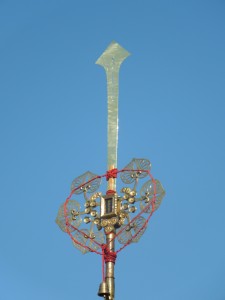
The top of a kenboko halberd. Each is up to 8m long, weighing around 35kg, and carried by a single bearer.
Five years ago the head priest of the shrine initiated a new style of parade with the cooperation of Kyoto Art University, and the result has been a striking success which draws increasing attention from locals and tourists alike. The floats are in modern manga style and based on mythological and folklore characters related to Awata Shrine. Some reflect the local character, and some the Izumo myths about the shrine’s kami, Susanoo no mikoto and Onamuchi no mikoto (another name for Okuninushi).
The floats are not the only remarkable thing about the event. The opening ritual called Yowatari shinjji (crossing into night rite) is deeply and distinctly syncretic, with the Buddhist priests of Chion-in taking an active part. A temporary altar is set up in the street facing Chion-in before an iwakura (sacred rock), into which the kami descends. The altar is Shinto, but the priests of Chion-in take full part in the service. (Chion-in is the head of the popular Jodo Shu sect, which believes in salvation through the mercy of Amida Buddha.)
Like other shrines, Awata Jinja was part of a Shinto-Buddhist complex until the great separation of the religions at the beginning of the Meiji Era in 1868. The syncretic instincts it retains are now given public expression in the joint celebration with its Pure Land neighbour, a practice that apparently began some fifteen years ago. It shows how even today the bonds between the two religions remain strong, and for many they are indeed inseparable.
In looking back to the past, Awata Jinja may well be blazing a trail for the future…
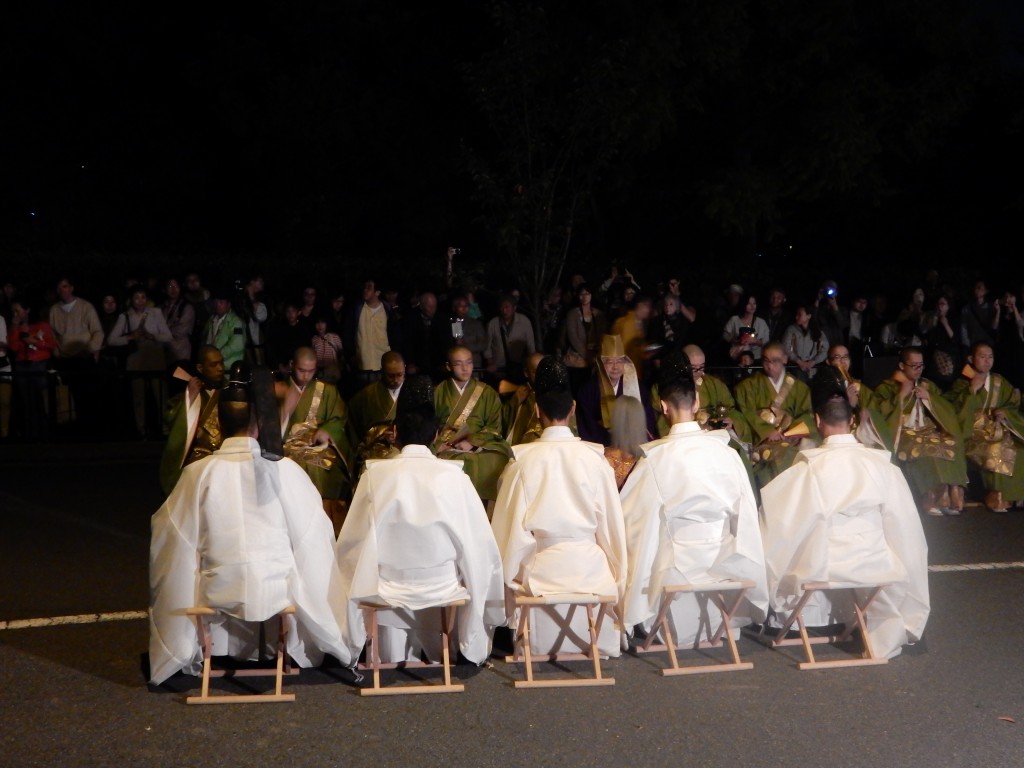
The five Shinto priests of Awata Jinja sit facing the twelve Buddhist priests of Chion-in
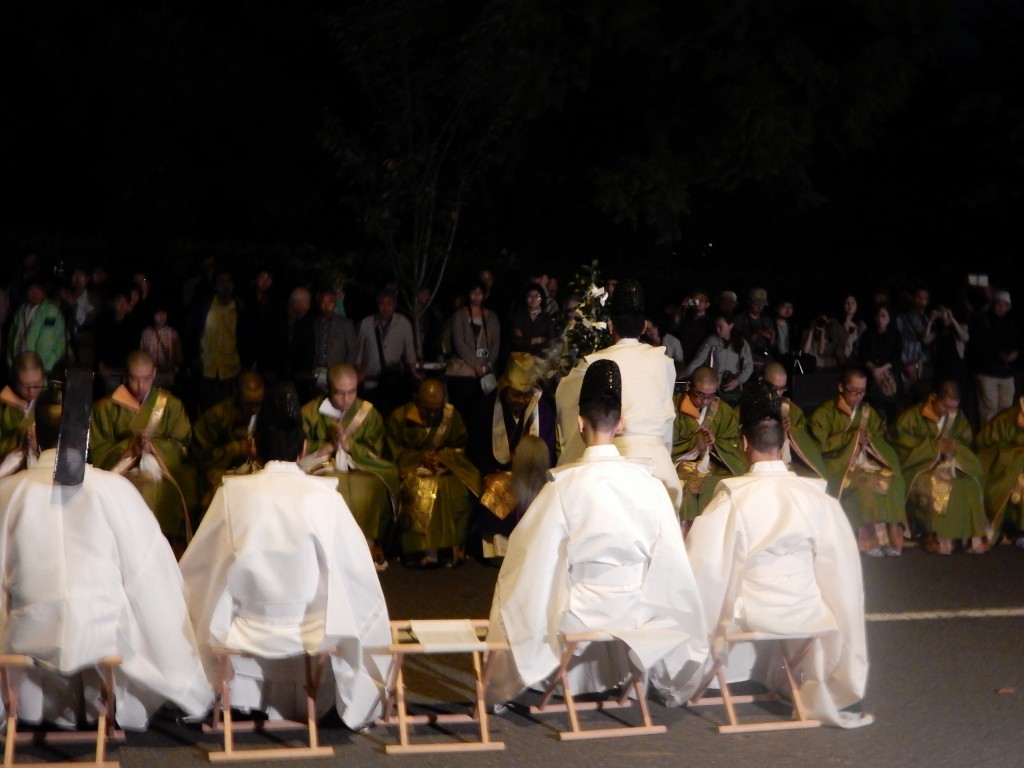
A Shinto priest purifying the assembled Buddhist priests
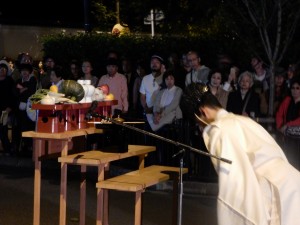
A Shinto priest pays respects at the altar…
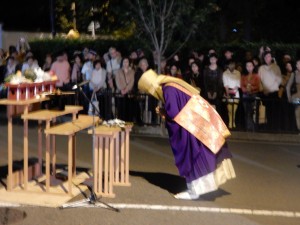
… as does the Buddhist head priest of Chion-in
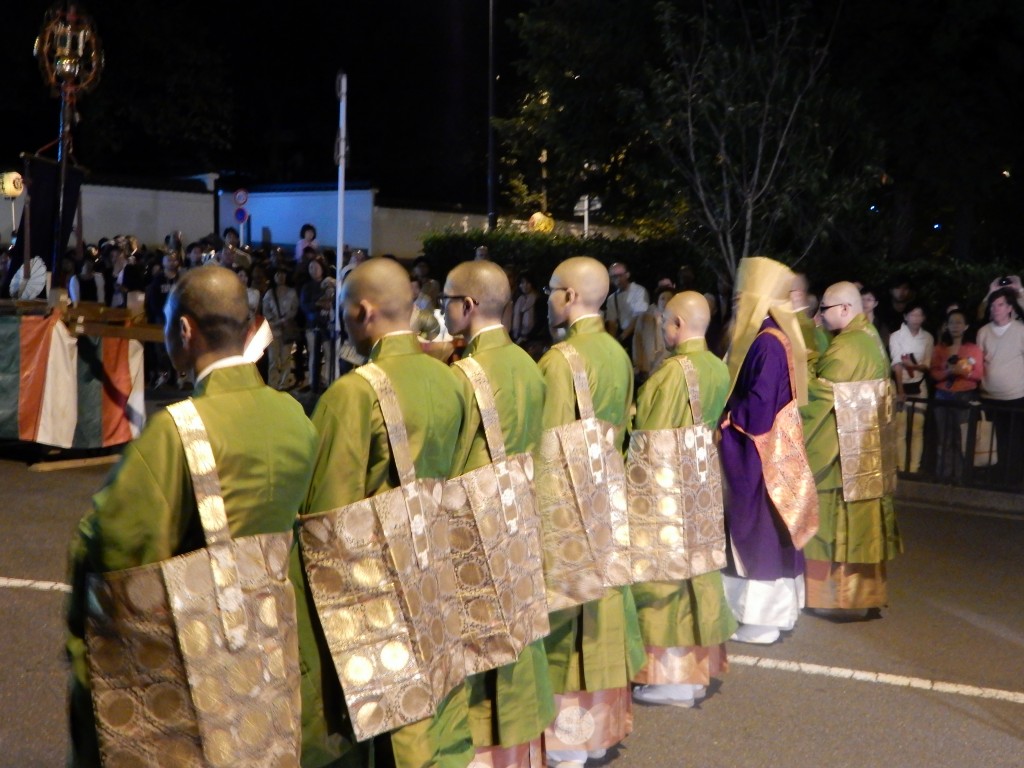
Buddhist priests lined up to recite the Hannya sutra before the Shinto altar
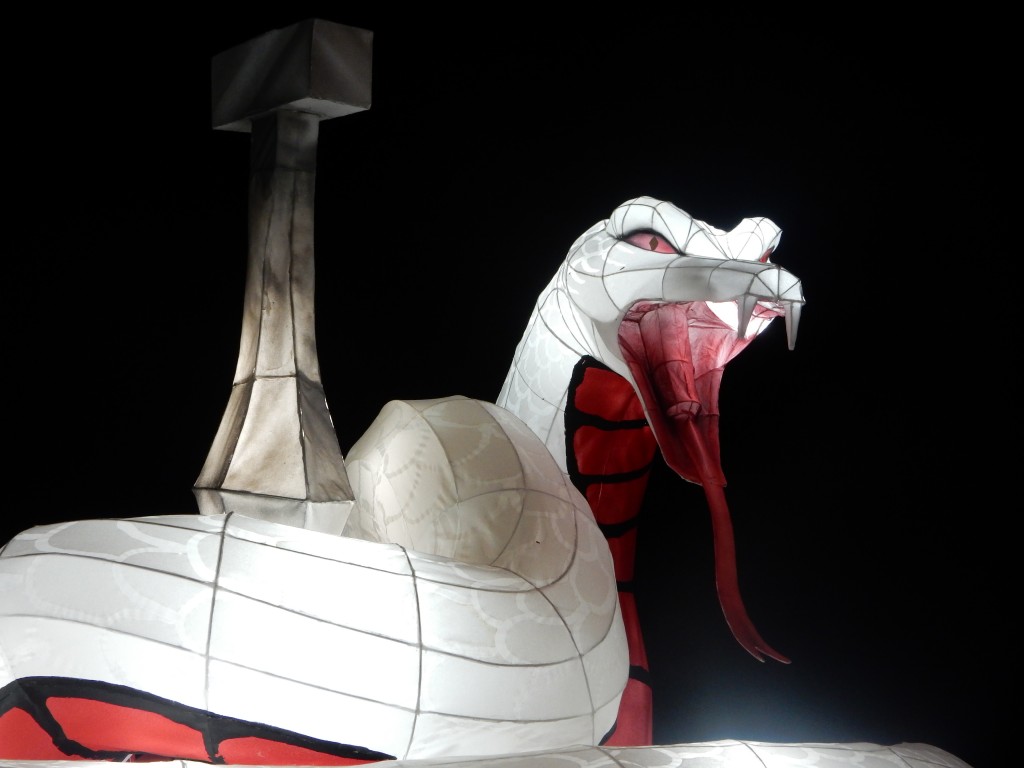
One of the enshrined kami at Awata Jinja is Susanoo no mikoto, who slew an eight-headed Orochi monster (the sacred sword he extracted is represented by the vertical piece)
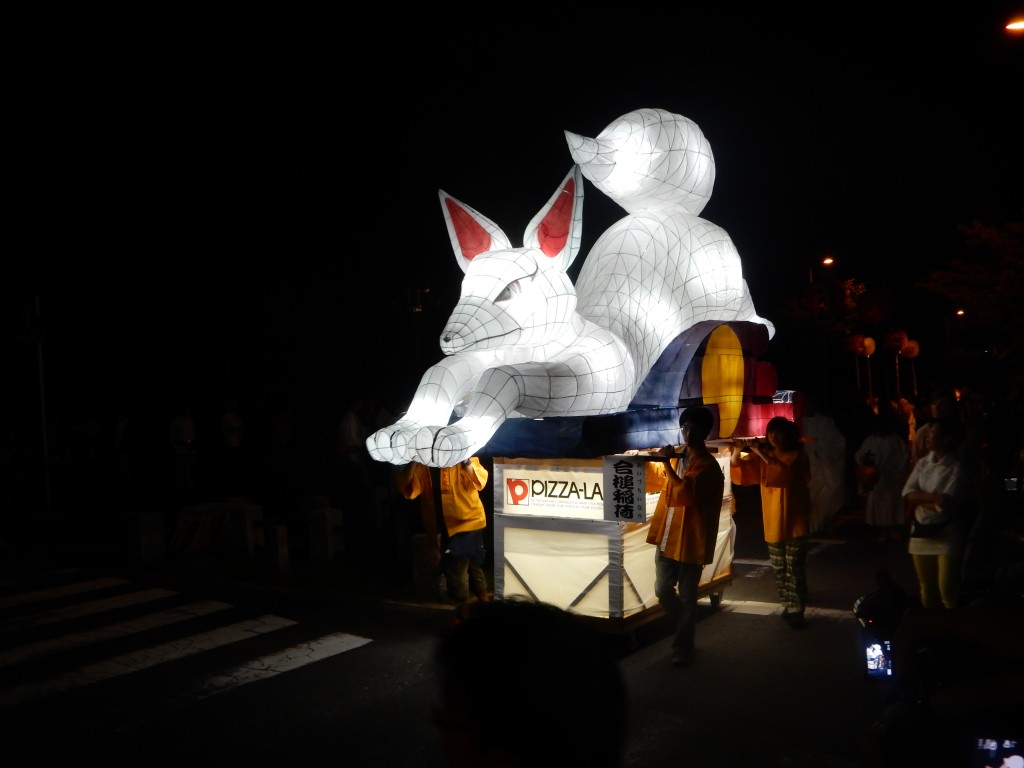
White fox representing an ancient legend associated with Awata Shrine, which hosts an Inari subshrine
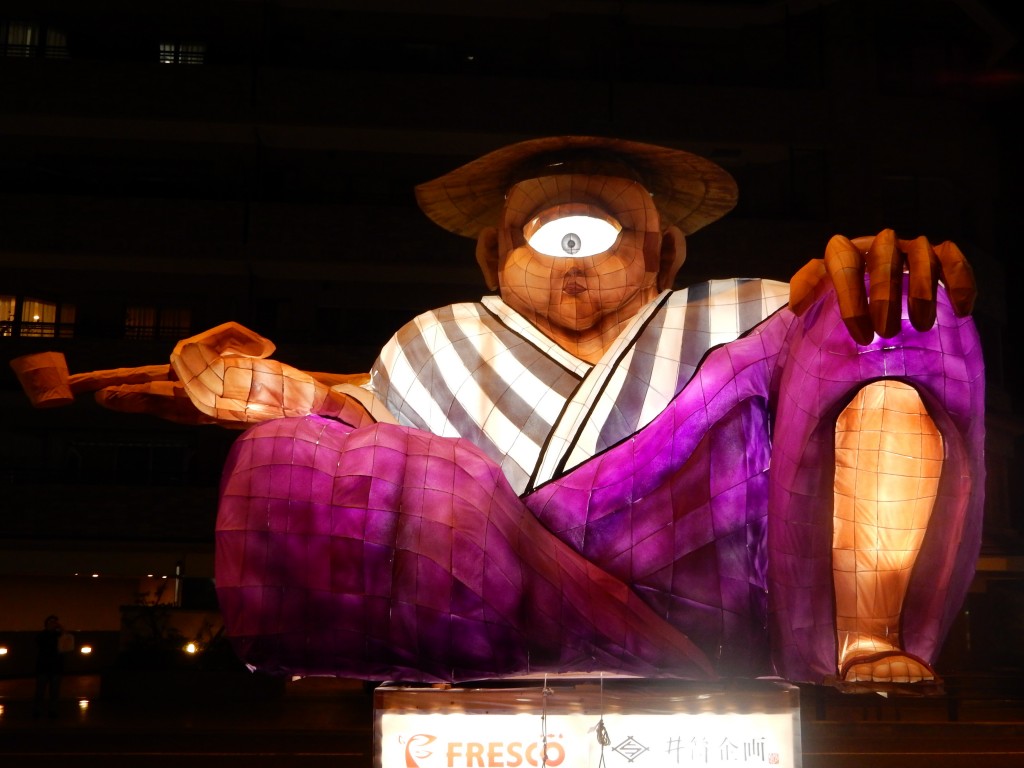
The one-eyed Kozo, sponsored by Fresco, representing the smiths who once lived in the parish area and whose eyes may have been damaged by sparks
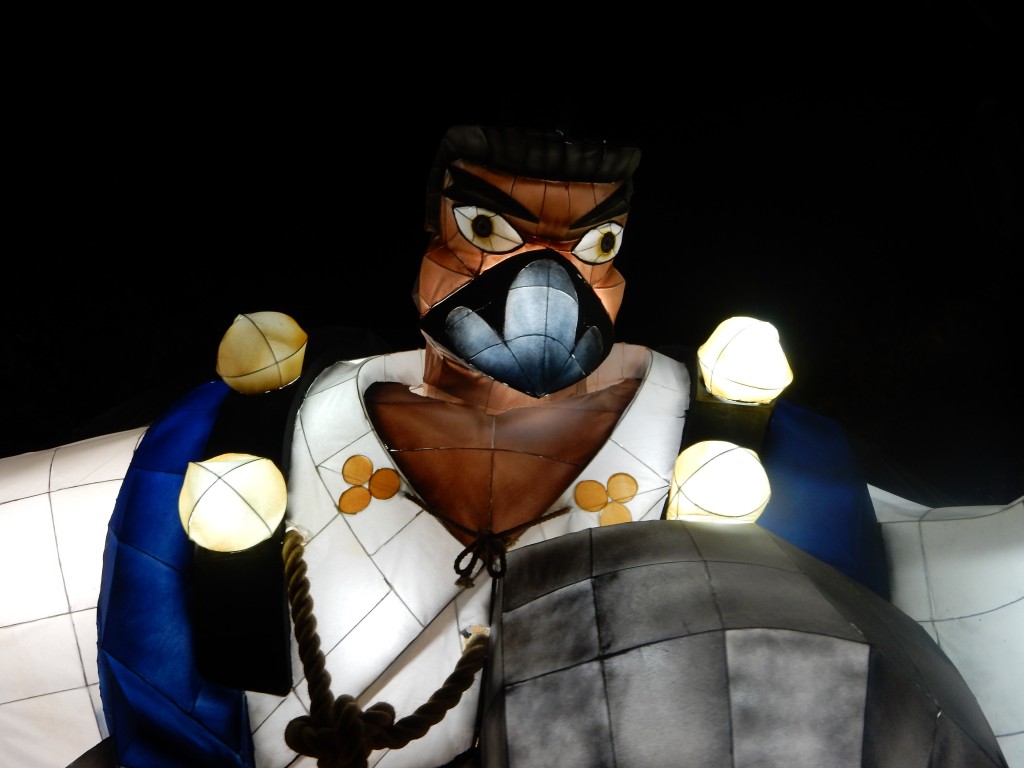
Karasu Tengu (Crow Monster) is a reference to folk hero Minamoto Yoshitsune, who grew up at Kurama and was trained by tengu in martial arts. When he escaped from Kyoto, he stopped off to pray at Awata Jinja.
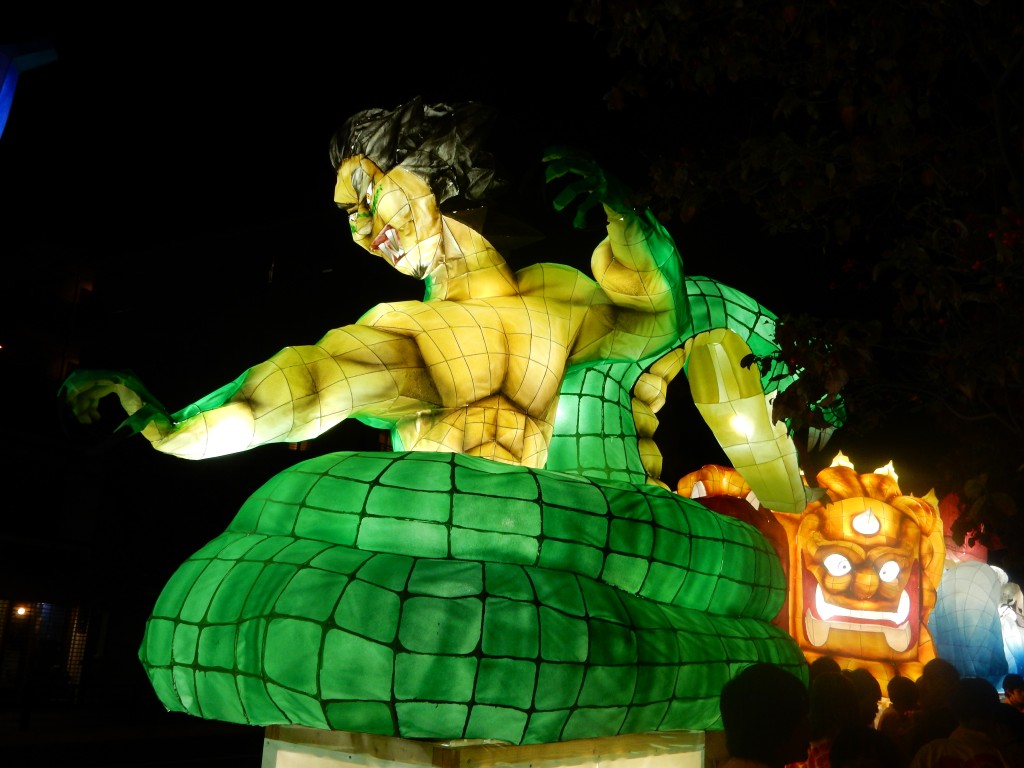
Onamuchi is one of the kami worshipped at Awata Jinja. The kami is considered to be the same as Okuninushi no mikoto, the main deity of Izumo Taisha.

In mythology Onamuch turns into a snake, thought to refer to an ancient snake cult (snakes symbolised regeneration because of being able to slough off their skin)
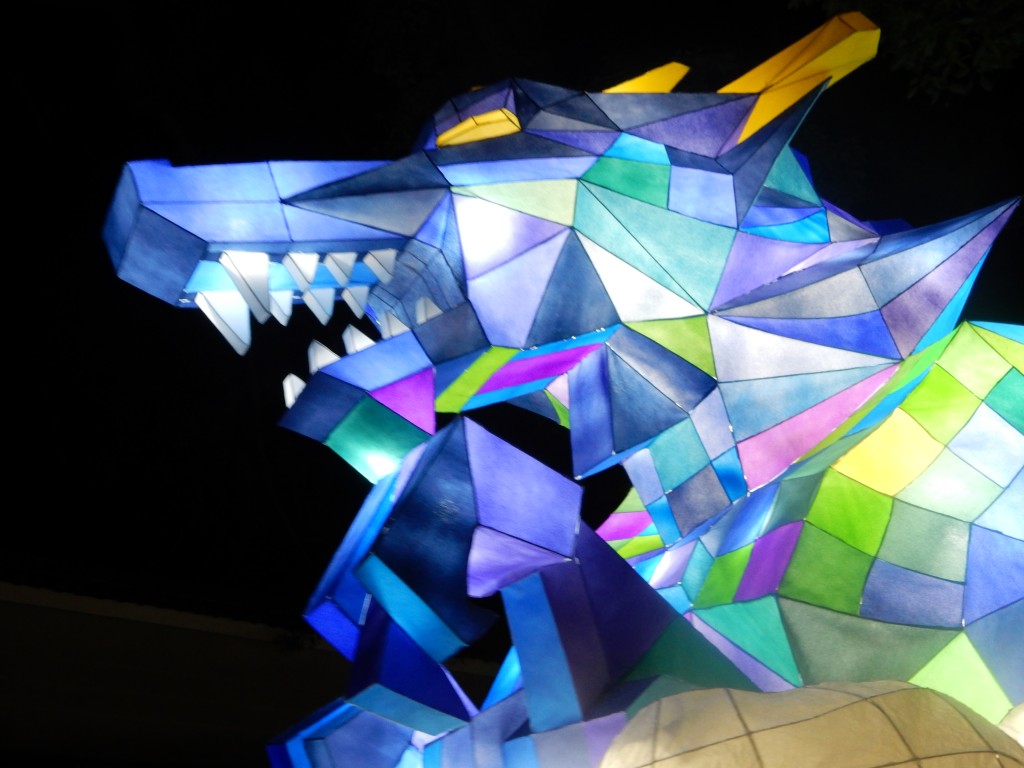
The blue dragon (‘seiryu’) is a reference to the Chinese feng-shui symbol that rules the eastern hills where Awata Jinja stands. (In the north, a black serpent-turtle, in the south a red phoenix, and in the west the white tiger.)
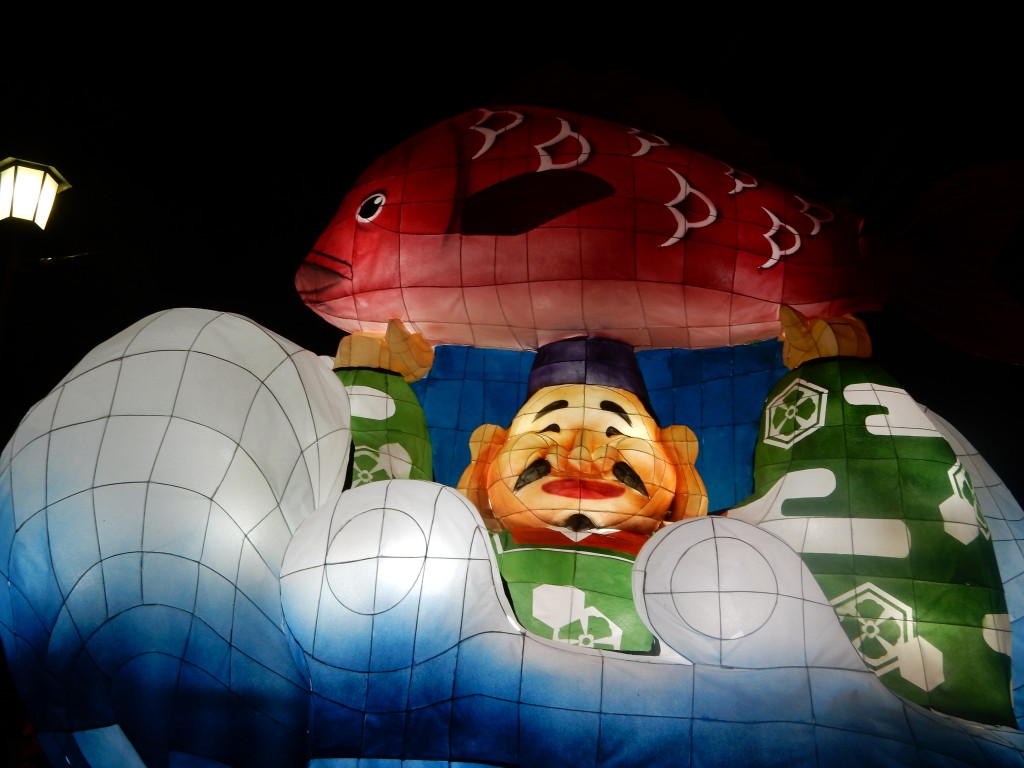
The float of Shusse Ebisu is a reference to Awata Jinja’s possession of Japan’s oldest statue of Ebisu (the fisherman kami)
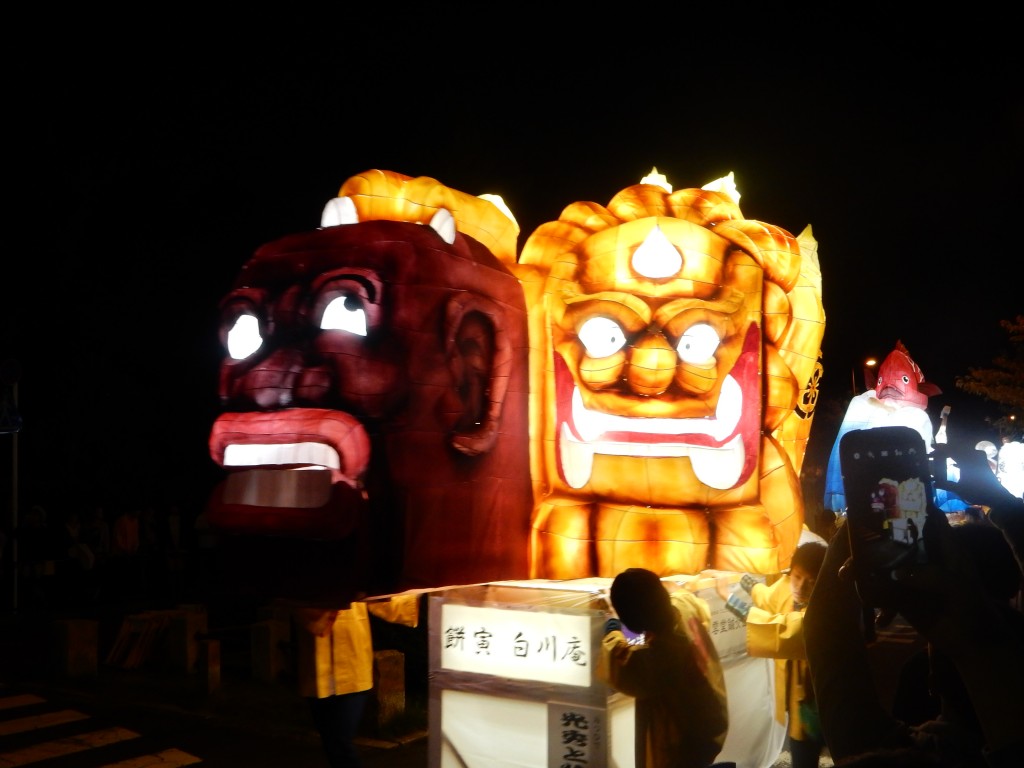
Akechi Mitsuhide was the traitor who killed Nobunaga, but was subsequently killed himself. His head is buried not far from Awata Jinja, and as a restless spirit (goryo) he is accompanied here by a komainu guardian to pacify his spirit.
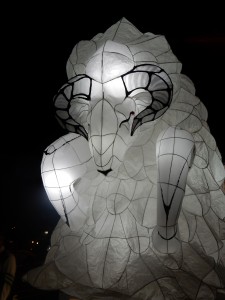
Sheep are next year’s Chinese zodiac animal, representing group togetherness
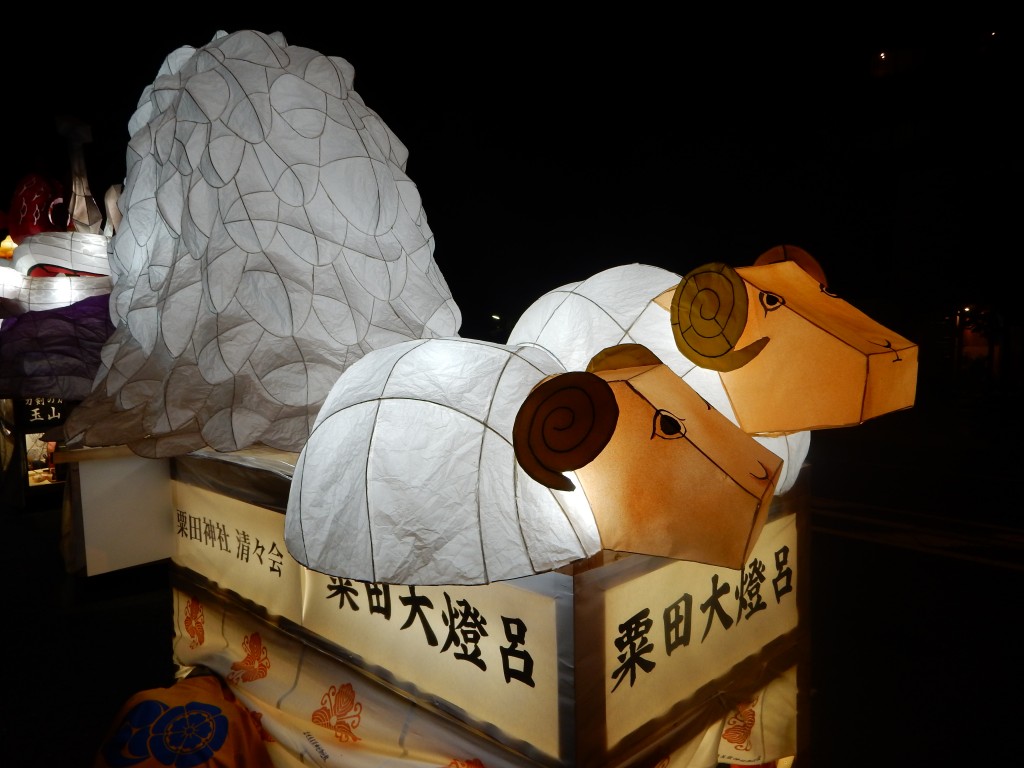
A couple of lambs to accompany the sheep
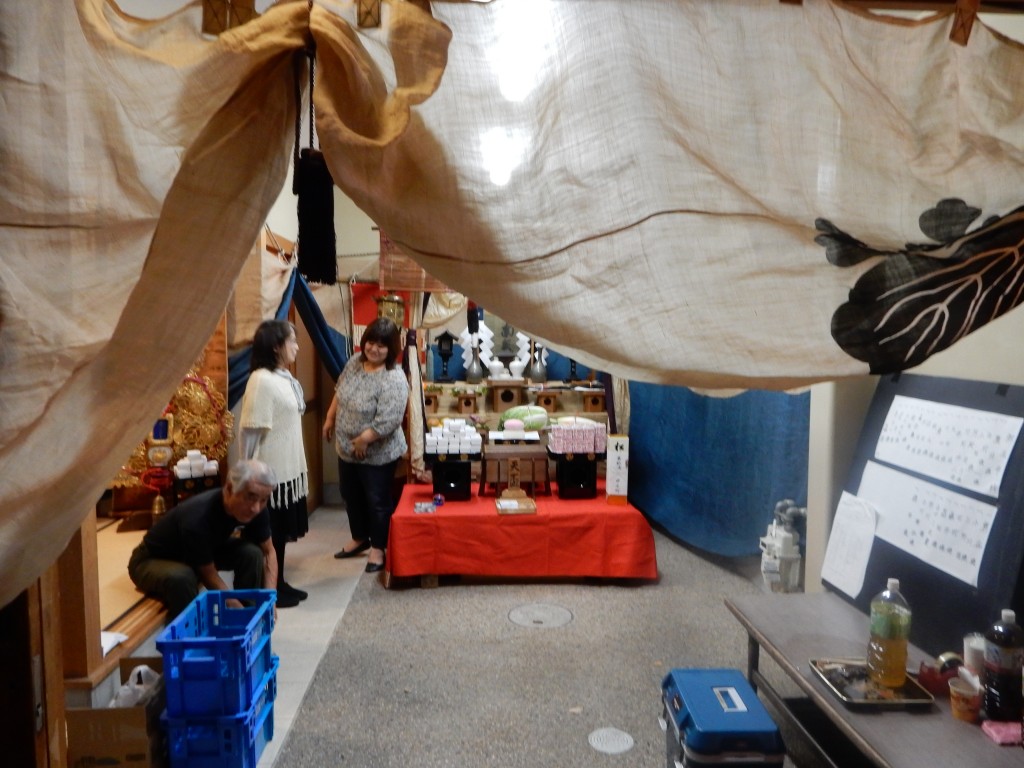
Each area of the Awata parish has a base for meetings and displaying treasures. This is the one for Nakanomachi, reminiscent of the grander bases for the gorgeous floats of the Gion Festival.
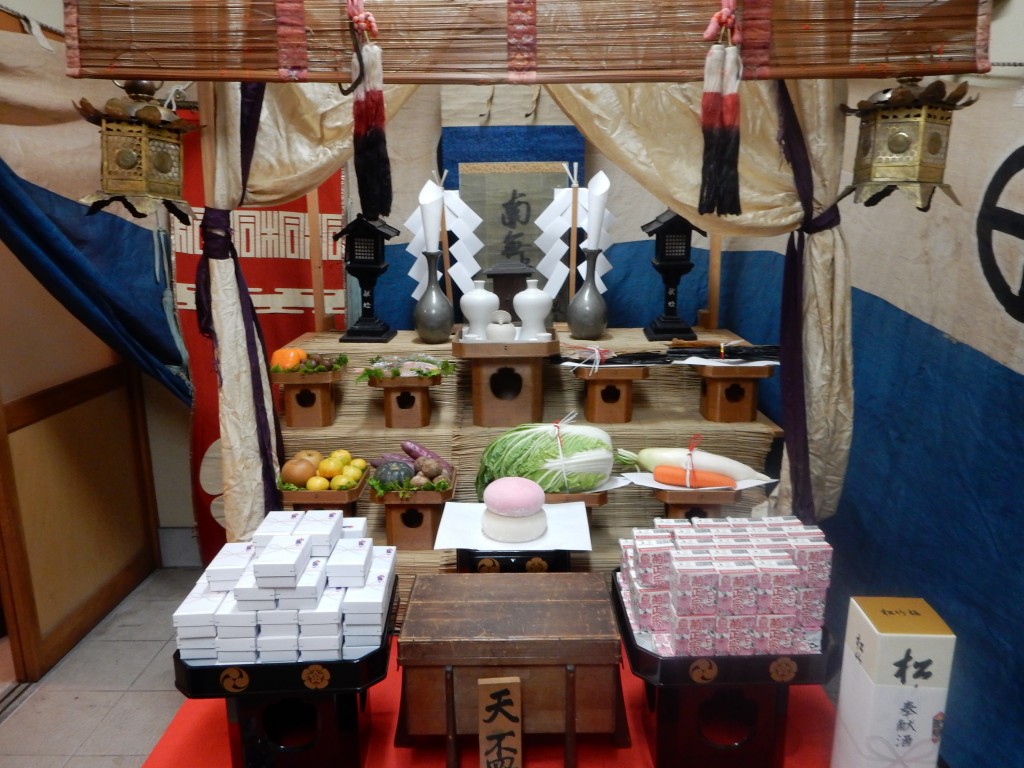
The Nakanomachi altar and offerings

very interesting article. I am french and did a lot of works paintings about the Kojiki.I did received the Culturel decoration last year.
Thank you for your comment, Marcestel. I looked up your website and the illustrations there are fantastic. Very beautiful. Congratulations on your award, it was surely deserved. (see http://marcestel.jp/detail/index.html)